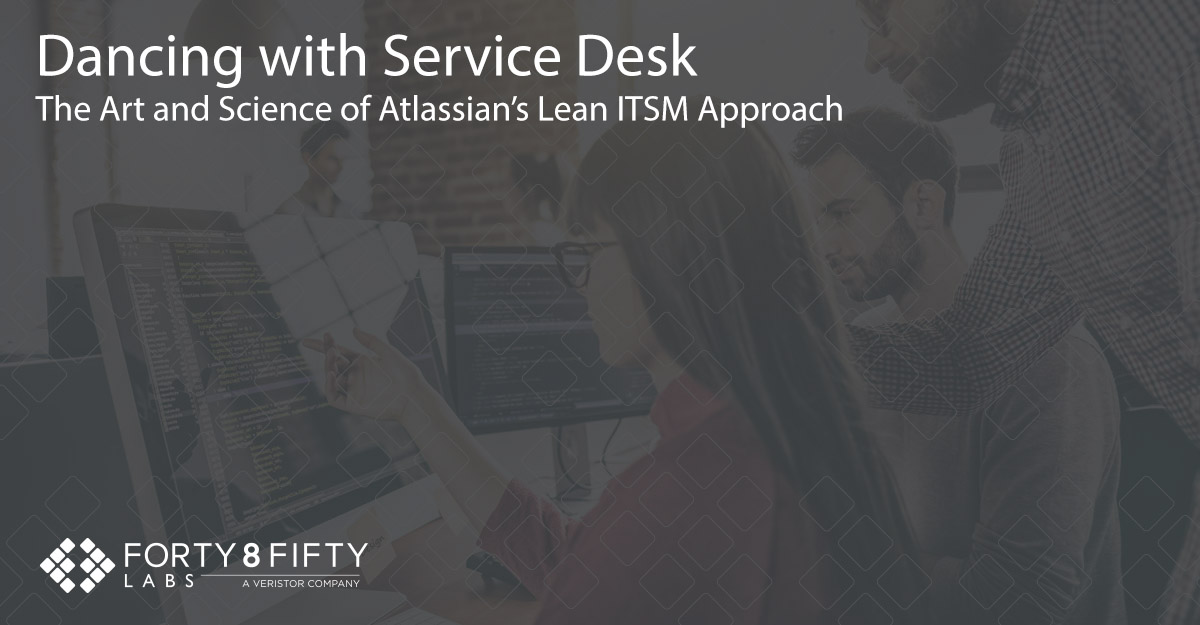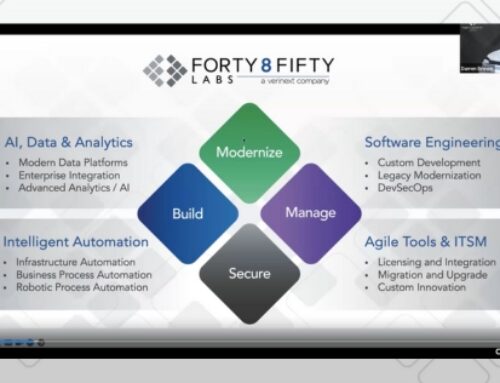Modern day systems are increasingly complex and constantly changing.
I realize that’s a ridiculously obvious thing to say. But I feel it deserves to be constantly repeated. Or, at the very least, kept prominently in mind when applying “frameworks” or “best practices” to the processes teams use in support of their IT systems.
Even though we may understand our IT systems in depth, it can be common to perceive them as an aggregate of similarities when considering operational solutions across systems. It’s something that has been a reoccurring challenge in my years working in and around IT. With so many competing and overlapping frameworks for IT processes – especially in the area of IT Service Management (ITSM) – it’s no wonder that the number of ITSM tools and platforms available to CTOs and IT Executives is mind boggling.
In the midst of this array of capabilities, pressures to meet compliance rules and procurement processes continue to mount, with greater difficulty. It’s no wonder that many decision makers choose to go with large, monolithic tools that promise to do everything in the ITIL, DevOps, or <insert framework here> process across all the systems they are responsible for. The ability to “one stop shop” is increasingly appealing as budgets get tighter and ROI demands continue to rise.
Why Legacy, Monolithic ITSM is Standing in Your Way
But in their attempt to “do it all,” legacy ITSM solutions have become monolithic and complex. That complexity, in fact, creates unintended silos that impede progress rather than enable it. Even so, customers buy-in and begin a long, arduous implementation process.
Teams set out customizing screens, data points, reports, and integrations until they get exactly what they want. Then, shortly after a new strategic decision is made, they realize their perfect ITSM solution is now broken, because one or more of the complex systems it is meant to support have changed. And the customizations that were so critical in the ITSM solution are now painful, unnecessary busy work that must be completed because the cost of updating the customizations in the ITSM solution are simply too much.
The Elements of Lean ITSM
These traditional ITSM challenges are why Atlassian’s approach to Lean ITSM is becoming so popular. IT technology, processes, and systems need to constantly evolve, adapt, and re-integrate so that businesses may thrive in changing markets. And because the rate of change is only increasing, the ability to adapt rapidly can make or break businesses and the IT teams that support them.
I am a fan of Atlassian’s approach to the software it designs because it aligns with one of the major tenets of DevOps: systems should be built on tools that are highly aligned, but loosely coupled. These may sound like mutually exclusive concepts, but they are not.
Let’s try this exercise. Open your hands so that your fingers are straight and slightly spaced apart. Now slide your hands together so that the fingers interweave into the slots between the opposite hand’s fingers. There… you have an aligned system. It’s interconnected, but you can easily slide your hands together or apart with no extra effort, so it’s also loosely coupled.
Now, let’s try connecting our hands in another way. Turn one hand palm up and the other palm down then hold them over each other. Now, while keeping each hand’s fingers tightly together, grip your hands by making a fist while cupping the fingers of the hands together. If you did it right, you should have your two hands locked together in interlocking fists. Again, we have a highly aligned system but, in this case, the difference in grip means that someone cannot easily pull your hands apart. This grip is highly aligned, but it is not loosely coupled.
What’s the point?
If you apply this concept to tools in your value stream, including ITSM, you want tools that are highly aligned but are loosely coupled so that as conditions change, and your systems evolve, you can replace, realign, or improve those tools with better or updated options. The dance that evolves between fiscal, technical, and perceived business needs leads to a back and forth between out-of-the-box features, custom integrations, and new capabilities offered by new tools. The more you lean on customizations or monolithic tools that offer little integration to other tools, the more you create situations where your systems become highly coupled.
Solutions that are tightly coupled imply that there has been extensive, codified customization that prevents you from easily replacing or repositioning it within your system. It may be highly integrated into your processes and currently providing value, but their tight coupling means that you have severely limited the ability to evolve your ITSM solution as your systems evolve. Worse, you have probably created a significant amount of maintenance work to maintain these customizations. As a result, you are adding technical debt.
Avoiding the High and Growing Cost of Technical Debt
If we consider the impact of technical debt as a cost, then the level to which you have created “coupling” is the interest rate on this technical debt over time. The more customization you insert into a solution – especially in monolithic solutions that require heavy, codified customization – the higher the interest rate on your technical debt, and thus, the higher the TCO for that solution over time. This is especially true if you include the cost to improve or move off the solution at its End of Life. Since evolution is directly related to the long-term viability of any business, you must avoid these situations.
This is where Atlassian’s collaborative approach to tools and processes aligns with the “highly aligned, loosely coupled” tenet of DevOps. At the heart of every Atlassian solution is a desire to improve collaboration across functional areas. This desire means that the ability to integrate across various platforms, tools, etc. must exist in such a way that a team is not locked out of the collaboration regardless of the process or tools they follow.
Functionality needs to be deployed, delayed, or bypassed without impacting core capabilities. This demands an approach to software that creates highly aligned offerings that are loosely coupled. And while you could deploy all of Atlassian’s tools to get integrated benefits, you don’t have to. You can deploy individual parts and use just the tools direct-from-vendor or the Atlassian Marketplace that enable the integration of different ITSM tools for the collaboration you require.
Atlassian’s Agile ITSM Approach
Atlassian naturally carried forward this approach when launching Jira Service Desk and began building a solution for a highly aligned, yet loosely coupled, set of tools in support of ITSM business teams. As Jira Service Desk has gained traction, Atlassian has continued to expand its capabilities in the ITSM space through direct improvement of Jira Service Desk and the development and acquisition of complementary products that round out a solution that is both comprehensive and lightweight.
In addition to this, and as a direct result of the Atlassian Marketplace approach to adding functionality, Jira Service Desk has rapidly expanded its ecosystem of integrations with numerous other tools in the ITSM space. Many of these integrations give you the agility to connect a variety of tools into your ITSM process without a single line of code or customization.
The Atlassian solution for ITSM starts with the basic steps of Jira Service Desk and Confluence. This first pair of products combine with out-of-the-box templates that enable rapid standardization of service requests, change management, problem management, and incident management. As such, Jira Service Desk becomes the hub for the management of unplanned work and business requests. Change, problem, or service requests are fulfilled through its user-friendly portal which presents customers with self-help guides or FAQs that can prevent the creation of unnecessary tickets. When a ticket is created, Jira Service Desk’s flexible workflows, automations, and approvals can be used to minimize the manual effort needed to respond and act on these tickets. This includes automatic communications to approvers, supporting resources such as dev, and even the customer themselves in order to keep the proper level of awareness and activity on the ticket.
Our customers have stated, time and time again how Jira Service Desk has drastically simplified the delivery of support request and self-service processes while simultaneously improving both their customer satisfaction and the level of visibility and collaboration across functional areas. In simpler terms, Jira Service Desk and Confluence reduced the amount of inbound operations and services tickets thanks to self-help capabilities AND customer satisfaction of support was improved due to better visibility, faster response times, and the consistent resolution of tickets when they were created.
The benefit? Less tickets means more time to work on actual tickets and less chance of tickets getting “lost in the shuffle.” Even tickets that must be placed on hold for weeks or months because they require development work are never lost because they are directly linked to the issues in the Dev or Business teams’ Jira backlog. As those issues progress through Dev or the Business workflow, they trigger updates to the JSD ticket that alerts customers, agents, and key stakeholders to the new status. Thus, Jira Service Desk and Jira combine to make sure that business, dev, operations, and the customer can always keep abreast of overall status.
Expanding the Wins of Lean ITSM
These initial ITSM process wins are in the Service Request and Change Management areas. As companies progress into the Problem and Incident management capabilities, integrations with monitoring tools combined with Jira Service Desk automations allow for the fluid transition to automated remediation steps that are followed up with manual validation and resolution processes. These validation and resolution processes, such as Post Incident Reports or Remediation Requirements, are tracked and reported. Functional teams can then use these reports to create feedback loops of continuous process improvement by using Confluence to collaborate on updates to runbooks, how-to’s, and service guides used by future incident response teams.
In my next post, I’ll discuss the new Jira Ops product and OpsGenie acquisition along with Statuspage and how these combine with Jira Service Desk and Confluence to provide a comprehensive Incident & Event management platform. Their integrations allow Atlassian customers to continue to grow and evolve their ITSM capabilities to support the intricate back and forthdance of responding with coordinated swarming on problems and incidents while flowing back into the managing of service and change requests.
For more information on how to implement Lean ITSM, joins us on March 12, 2019 for our spring DevOps Tech Summit – Lean ITSM: Light Weight, Big Impact. During this one-day event, industry gurus will discuss the IT and business benefits for adopting Lean ITSM, how to emphasize the “Ops” in DevOps and where to start a Lean ITSM transformation to make a positive impact on your business.
Seating is limited. Register now at: https://bit.ly/DevOps-Tech-Summit-2019-social.






